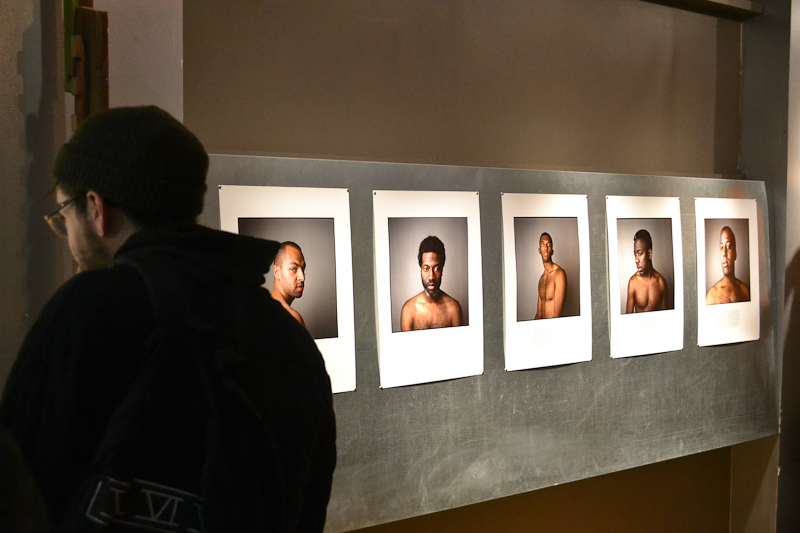For the past two years, Olivia Johnston felt compelled by stories of unarmed African-American shooting victims, but powerless to make a difference.
“I really felt like I had no influence over it and I had no way of affecting it,” she said.
Johnston said UNARMED, a new photo-exhibition at La Petite Mort Gallery, emerged from that struggle. For her, art became a way of speaking out.
The exhibition is a series of nine 17-inch-by-21.5-inch portraits of self-identified black men opened Oct. 10.
Each photograph is paired with the story of a black man, similar in age to each model, who was killed by law enforcement officers while unarmed.
“It’s almost like the Canadian equivalent, like if this man had been in the U.S. he might have been the one who died,” Johnston said.
She said a key theme in UNARMED is vulnerability. Her photographs are stripped down aesthetically—her models are shirtless and her backgrounds are clean and monochromatic—and that simple beauty plays off the horror of each victim’s story.
“It’s the idea of ‘unarmed’ as disarmed, as in taken off guard,” Johnston said. “When are you more vulnerable than at the moment of your death?”
Qusai Ali was one of nine men photographed for UNARMED. He represented Amadou Diallo, a 23-year-old unarmed black man shot 41 times in New York City in 1999.
“When I first heard about [Diallo’s] story I was actually still pretty young. I was about 14 maybe, maybe even younger,” Ali said.
“It just shocked me—the extent that people will go to when they have that perspective or that hate or whatever it may be that led them to do what they did.”
Elise Laporte, a third-year art history student at Carleton and an intern at the gallery, said Johnston’s art brings the nine victims suffering to life.
“All the portraits, their eyes, they tell so much—even if it’s not the actual person who suffered or anything. It’s still shocking to see that,” she said.
“It’s hard to watch. Some of the stories are really recent so it’s shocking to see that things are still happening.”
UNARMED is Johnston’s third show at the gallery, but she said it is different from her previous work.
“It’s kind of a step forward for me because a lot of the time I’m sort of talking about art historical things. This is a bit more political and it’s a bit more contemporary,” she said.
She said ideally, the show would be happening in the U.S., where each of the stories she chose to depict took place. But she said she hopes people leave UNARMED more aware of issues affecting race and how they can actively work to make a difference.
“The least I can do is make a tiny step at trying to chip away at this because it really is a terrible thing,” she said.“I hope people come to the show, realize what’s going on and question and think about what’s happening in their own lives that maybe they could change to start to pick apart the pieces of racism that still exist.”
The exhibition is scheduled to run until Oct. 17.






